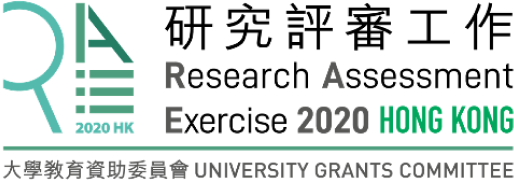Unit of Assessment:
Research categories:
?Biology & Biochemistry
Cell Biology (1)
Clinical Medicine
Oncology (1)
Pharmacology & Toxicology
Pharmacology & Pharmacy (2)
Case Study
Preventing nausea and vomiting to enable a more effective treatment of cancer
1. Summary of the impact
Cancer represents a leading cause of mortality in the world, accounting for over 30% of all deaths. Globally, there are an estimated 14 million cancer cases, with numbers expected to increase to 24 million by 2035. Cancer chemotherapy is associated with severe nausea and emesis resulting in a reduced quality of life and refusal of treatment in some patients. This case study is concerned with the discovery and development of drugs that reduce nausea and emesis permitting an improved quality of life and a more effective use of anticancer treatments leading to the survival of the cancer patient.
2. Underpinning research
The introduction of cisplatin-based chemotherapy heralded a revolution in the treatment of cancer. However, cisplatin is associated with unacceptable nausea and emesis in almost all patients. In the late 1980s, ondansetron and granisetron and other 'setrons' were synthesised and their potential to reduce emesis via blocking 5-HT3 receptors was demonstrated in animals and man.
Prof. Rudd's Ph.D. was funded by Glaxo between 1988-1991 on understanding the utility of 5-HT3 receptor antagonists. He was part of the team screening compounds to prevent emesis and identifying 5-HT3 receptors in the human brainstem. The studies also discovered that chemotherapy caused elevations of 5-HT in the plasma in some patients experiencing emesis.
5-HT3 receptor antagonists reduced the early acute day 1 nausea and emesis by ~60%, but the response occurring on days 2-5was only reduced by ~ 30 % (Section 3, Ref. 1) . Prof. Rudd directed three main approaches to advancing knowledge in this area: (i) to develop 'broad inhibitory' anti-emetics to suppress unidentified mechanisms of emesis; (ii) to develop a new animal model of acute and delayed emesis; and (iii) to dissect the anti-emetic action of dexamethasone, given the known existing beneficial effects combined with setrons. Prof. Rudd's reappraisal in 1991 of the in vivo pharmacology of opioids, confirmed a broad inhibition of emesis was possible and this underpinned efforts by Glaxo during the discovery process of the anti-emetic potential of substance P NK1 receptor antagonists. The second approach produced the first animal model of cisplatin-induced acute and delayed emesis. The model became the gold-standard, validated at CUHK by Prof. Rudd in 1996 by its ability to detect the interaction between ondansetron and dexamethasone. Prof. Rudd used the model to discover for the first time that NK1 receptor antagonists prevented delayed emesis (Section 3, Ref. 2) - these experiments led to a collaboration with Merck Sharpe and Dohme which were credited as the impetus behind the successful introduction of aprepitant in man (Section 5, source E). In 2010, Prof. Rudd collaborated with Helsinn Healthcare to evaluate the mechanism of action of second generation 5-HT3 and NK1 antagonists (Section 3, Ref. 3) . Palonosetron and netupitant had long durations of action to prevent acute and delayed emesis. Netupitant also exhibited prevented emesis induced by other challenges including motion, and could be combined with palonosetron and dexamethasone to provide long lasting benefits following oral administration. Clinically, palonosetron and netupitant in combination with steroids now reduce acute nausea and emesis by up to 90% and delayed nausea and emesis by 80-85%. This represents an advance of 30-50 % better control than the first generation compounds. Initially working with GlaxoSmithKline, Prof. Rudd discovered that ghrelin may offer clinical utility in the control of emesis. Subsequently, collaborations with Helsinn showed that orally bioavailable ghrelin mimetics may be used in combination with palonosetron and netupitant (Section 3, Ref. 4) . Prof. Rudd's most recent work discovered that cisplatin alters the shape of gastric slow waves (Section 3, Ref. 5) demonstrating a continuous portfolio in anti-emetic research benefitting millions of patients.
3. References to the research
- Rudd JA, & Andrews PLR (2004). Mechanisms of Acute, Delayed and Anticipatory Emesis Induced by Anticancer Therapies. In Management of nausea and vomiting in cancer and cancer treatment. Edited by Hesketh P. Jones and Barlett Publishers Inc.: New York, Chapter 2, pp 15-66.
- Andrews, PLR & Rudd, JA (2004). The role of tachykinins and the Tachykinins NK 1 receptor in nausea and emesis. In: Tachykinins. Ed. Holzer, P, Springer Verlag, USA. Handbook of Experimental Pharmacology, 164, 359-440.
- Rudd, JA, Ngan, MP, Lu, Z, Higgins, G, Giuliano, C, Lovati, E, & Pietra, C (2016). Profile of antiemetic activity of netupitant alone or in combination with palonosetron and dexamethasone in ferrets and Suncus murinus (house musk shrew). Frontiers in Pharmacology, 7: article 263.
- Rudd, JA, Chan, SW, Ngan, MP, Tu, L, Lu, Z, Giuliano, C, Lovati, E, & Pietra, C (2018). Anti-emetic action of the brain-penetrating new ghrelin agonist, HM01, alone and in combination with the 5-HT 3 antagonist, palonosetron and with the NK 1 antagonist, netupitant, against cisplatin- and motion-induced emesis in Suncus murinus (house musk shrew). Frontiers in Pharmacology, 9: Article 869. doi: 10.3389/fphar.2018.00869.
- Lu Z, Ngan MP, Lin G, Yew DTW, Fan X, Andrews PLR, & Rudd JA (2017). Gastric myoelectric activity during cisplatin-induced acute and delayed emesis reveals a temporal impairment of slow waves in ferrets: effects not reversed by the GLP-1 receptor antagonist, exendin (9-39). Oncotarget, 8(58): 98691-98707.
4. Details of the impact
Prior to the introduction of 5-HT3 and NK1 receptor antagonists, patients considered the nausea and emesis induced by cancer treatment to be so severe to warrant discontinuation of therapy. Our discoveries paved the way to much-needed relief from nausea and vomiting. In 2014, American Society of Clinical Oncology ranked the development of anti-emetics as a 'Top 5' advance in modern oncology (Section 5, Source B) . Ondansetron is currently on the World Health Organisations list of essential medicines (Section 5, Source C) . The Multinational Association of Supportive Care in Cancer (MASCC) guidelines for acute and delayed emesis recommend the use of 5-HT3 and NK1 receptor antagonists in combination with dexamethasone for the control of acute emesis, and a NK 1 receptor antagonist in combination with dexamethasone for the control of delayed emesis induced by highly emetogenic anticancer regimens, including cisplatin (Section 5, Source D) .
We were instrumental in elucidating the mechanisms involved in emesis control since the late 1980s. The key to this impact case, however, is our development of the first animal model of cisplatin-induced acute and delayed emesis using ferrets (Section 3, Ref. 2) , which identified the role of NK 1 receptors in the delayed phase (Section 3, Ref. 3) and led to aprepitant being introduced in man to reduce nausea and emesis in millions of patients worldwide (Section 5, Source E) . From these fundamental experiments, we were successful in assisting Helsinn with the development of second generation 5-HT 3 and NK 1 receptor antagonists.
We have collaborated with several pharmaceutical companies (e.g. Millennium Pharmaceuticals, Inc., GlaxoSmithKline, Organon Laboratories Ltd., XW Laboratories, Inc.) to test novel anti-emetics in the ferret model, providing advice relevant to chemical drug development portfolios (Section 5, Source F) . The most recent of these consultancies was with Helsinn Healthcare, contributing data from studies in ferrets (Section 5, Source F) towards the first successful FDA submission approving of a combinational formulation of 5-HT3 and NK1 receptor antagonists, palonosetron and netupitant (Akynzeo ) (Section 5, Source G) . Akynzeo® is the only combinational agent approved for the treatment of acute and delayed emesis, given as a single dose in combination with dexamethasone, providing significantly more protection to other therapies. Moreover, the advantage and convenience of a single formulation, and single administration, compared to combinatorial repeat drug administration over the course of several days, represents a significant advancement in patient care and healthcare management. This is recognised in an increase in the percentage of patients having complete control of nausea and emesis and also in the reduced cost of administration and need to administer additional rescue therapies. Akynzeo® is now listed in the MASCC guidelines for the treatment of chemotherapy-induced nausea and emesis (Section 5, Source D) . Using Akynzeo® , acute emesis is now completely controlled in 99% of patients, and the overall complete control rate over five days is 90% (Section 5, Source H) . This represents a 30-50 % better control than obtained with the first generation compounds such as ondansetron and aprepitant.
In recognition that some patients would still experience nausea and emesis, we collaborated further with Helsinn Healthcare to capitalise on our observations that ghrelin has antiemetic activity against cisplatin-induced emesis (Section 5, Source F) . Since our original observations (Section 3, Ref. 6) , ghrelin and several ghrelin mimetics have been shown to reduce nausea and/or emesis in clinical scenarios. We have recently characterised the anti-emetic potential of the first orally bioavailable ghrelin mimetic, HM01, against chemotherapy and motion-induced emesis; we showed that HM01 could be used in combination with palonosetron and netupitant. This fundamental discovery therefore opens up new possibilities in emesis control (Section 5, Source H).
We have contributed to a refinement of the conduct of experiments into mechanisms of nausea and emesis by the use of technology to simultaneously record bio-potentials and respiratory data (Section 5, Source E) . This has led to a much-improved understanding of biomarkers for nausea and the detection of side effects. The methodological developments are a continuation of refinement in the field starting from the development of the first animal model of acute and delayed emesis. The ongoing contributions to research field led to an invitation to speak by the National Centre for the Replacement, Refinement and Reduction of Animals in Research (Section 5, Source E) , and by an invitation to present a keynote presentation at the last international conference on mechanisms of nausea and emesis control (Biology and control of nausea and vomiting 2015), where the art of modern anti-emetic discovery was acknowledged (Section 5, Source J) .
5. Sources to corroborate the impact
- Wellcome Trust History of Medicine Series documents the impact of anti-emetic discovery on the treatment of side effects induced by chemotherapy.
- American Society of Clinical Oncology Survey to acknowledge role of anti-emetic discovery to cancer treatment.
- Ondansetron is listed by the World Health Organisation as an Essential Medicine.
- MASCC/ESMO guidelines for the use of anti-emetics in the treatment of chemotherapy- induced acute and delayed emesis. Roila F, Warr D, Hesketh PJ, Gralla R, Herrstedt J, Jordan K, Aapro M, Ballatori E, & Rapoport B (2017). 2016 updated MASCC/ESMO consensus recommendations: Prevention of nausea and vomiting following moderately emetogenic chemotherapy. Supportive Care in Cancer, 25: 289-294.
- Contribution of the discovery of the anti-emetic potential of NK 1 antagonists to the treatment of emesis in man. (A letter dated 7 February, 2019, from Dr. F.D. Tattersall of GlaxoSmithKline is attached.)
- Since January 2010, a total of HK$23,873,931 had been given by various industrial companies to Prof. Rudd for supporting his anti-emetic research. (Details of Prof. Rudd's grant records from industrial companies is attached.)
- A letter dated 8 February, 2019, from Dr. Claudio Pietra of Helsinn about role of preclinical work that leads to FDA submission and Akynzeo® being used to treat emesis in man and its impact is attached.
- Review detailing impact of the clinical use of 5-HT3 and NK1 receptor antagonists. Jordan K, Jahn F, & Aapro M (2015). Recent developments in the prevention of chemotherapy-induced nausea and vomiting (CINV): a comprehensive review. Annals of Oncology, 26: 1081-1090.
- Review detailing scope of use of ghrelin mimetics relative to ability to reduce nausea and emesis. Sanger GJ, & Furness JB (2016). Ghrelin and motilin receptors as drug targets for gastrointestinal disorders. Nature Reviews Gastroenterology & Hepatology, 13: 38- 48.
- Refinement of animal models and contribution to state-of-the-art anti-emetic discovery.

